
- Home
- Photography Tours
- Diary / Blog
- Galleries
- Foreign Trips
- Tasmania 2016
- NE Queensland 2016
- Western Alps 2016
- NE Spain 2016
- Australia's Wet Tropics 2015
- Australia's Top End 2015
- SW Australia 2015
- Switzerland 2015
- Andalucia 2015
- Belize 2015
- Australia 2014
- Switzerland 2014
- Belize 2014
- Bahama Islands 2014
- Switzerland 2013
- Ecuador 2012-2013
- Florida 2011-2012
- Vancouver Island 2011
- Australia 2010
- Peru 2008
- Bulgaria 2007
- Lesvos 2006
- California 2006
- New Zealand 2005
- Extremadura 2005
- Goa, India 2004
- The Gambia 2003
- About
April / May 2016
Northeastern Spain
Part 3 : Hecho valley
I didn't venture far into the Pyrenees. It got colder and wetter the higher I got and there were still very few flowers in bloom above 1500m altitude. Consequently, I spent most of my time in this area walking around the foothills surrounding the village of Hecho, although even here decent flower diversity could only be found on sheltered, south-facing slopes. It took a lot of searching (hiking 15-25km per day) but I did eventually find some of the Ophrys orchids I was looking for.
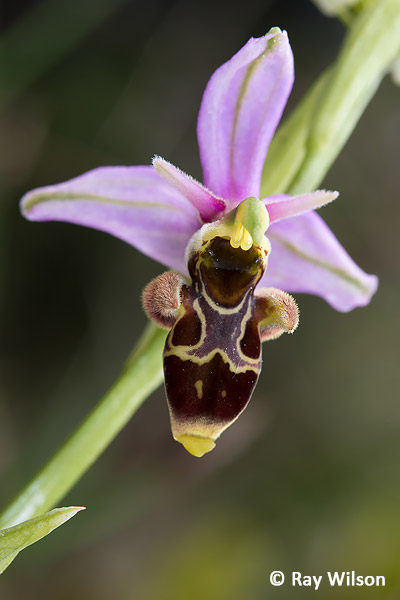 |
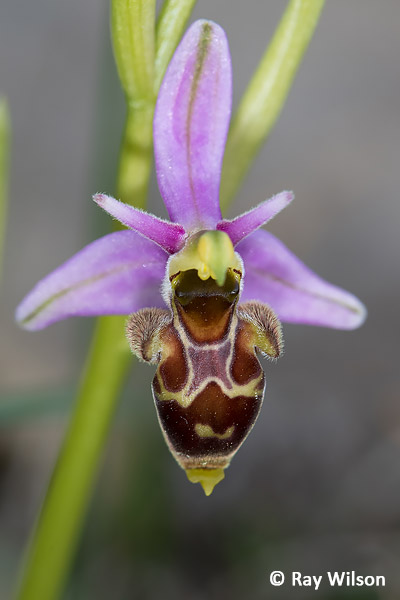 |
Woodcock Orchid (Ophrys scolopax)
Apart from being extremely beautiful, the Ophrys orchids are also a very interesting group biologically that have taken sexual subterfuge to an extreme level. As with most orchids, they are pollinated by insects but in their case this duty is almost exclusively performed by male solitary bees (the only exceptions being O. insectifera and O. sphegodes which are pollinated by male solitary wasps). The Ophrys flowers produce a scent that is barely detectable to a sensitive human nose, but is comprised of a complex mixture of compounds that exactly mimics the sex pheremones released by female bees of their target species and drives the males wild with desire. The mimicry adaptations do not stop at "merely" producing an attractive scent, however, and the flower structure also closely mimics the female bee. For example, the "mirror" portion of the flower's lip reflects UV light (bees can see further into the blue side of the spectrum than we can) to imitate the play of light on the folded wings of an insect and the hairiness of the lip precisely mimics the hairiness of the female bee. Once the male bee has been duped into approaching the flower it immediately attempts to mate with it, triggering the release of the sticky pollinaria onto the male bee's back.
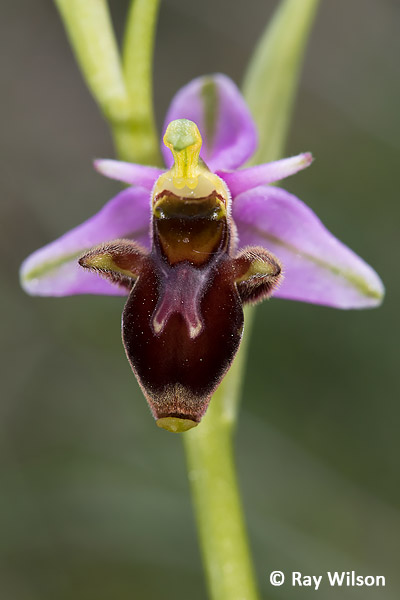
Woodcock Orchid (Ophrys scolopax) |
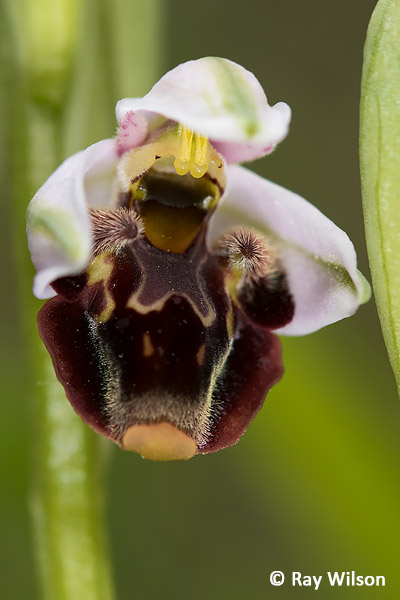
Bee Orchid (Ophrys apifera) |
The Common Bee Orchid (O. apifera) is an exception to the rule and, instead of parasitising the sexual behaviour of bees, fertillisation is generally achieved through self-pollination.
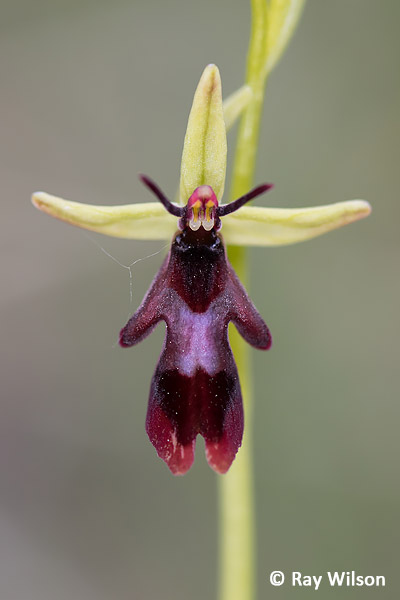
Fly Orchid (Ophrys insectifera) |
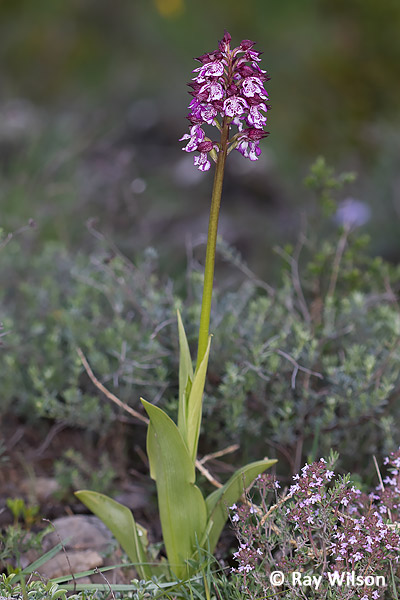
Lady Orchid (Orchis purpurea) |
In addition to the visual mimicry features mentioned above, the narrow petals of the Fly Orchid (O. insectifera) closely resemble a pair of antennae. This species is also unusual in that it is pollinated by a male solitary wasp and not a bee as with most other Ophrys species.
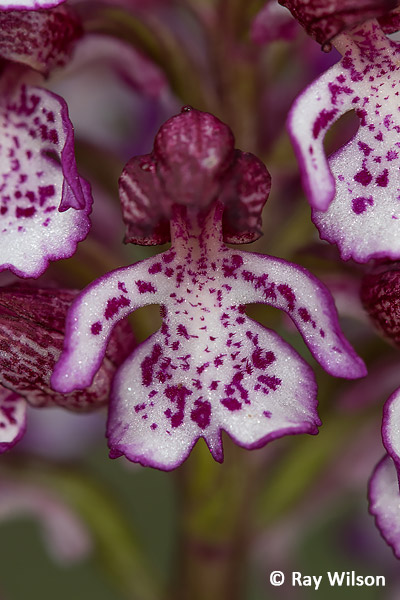 |
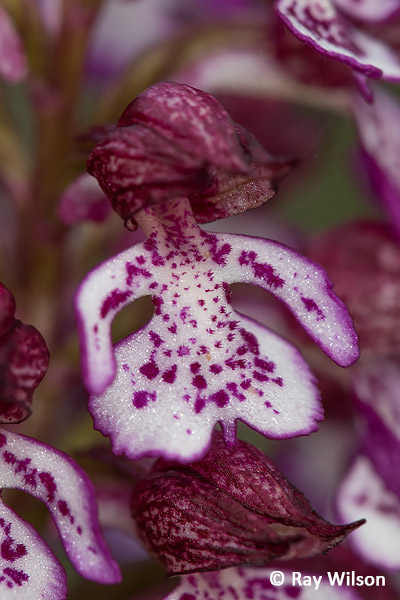 |
Lady Orchid (Orchis purpurea)
Lady Orchids were common on the lower slopes.
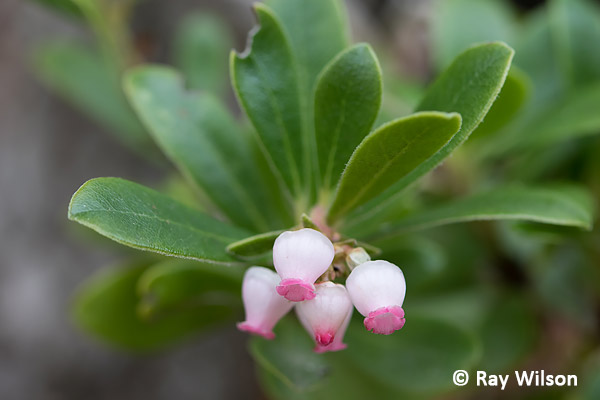
Bearberry (Arctostaphylos uva-ursi)
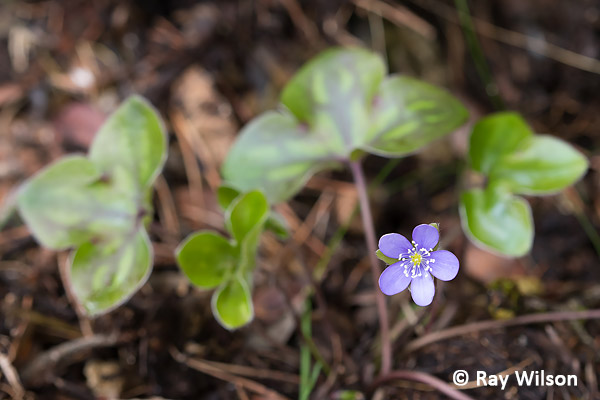
Hepatica (Hepatica nobilis)
The white form of Hepatica is uncommon but in one valley I found it to be the dominant form.
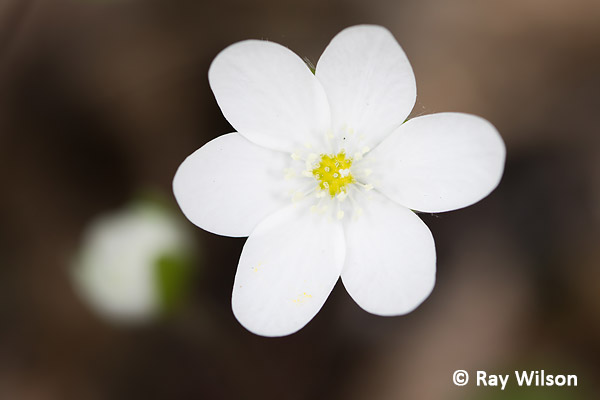
white variant of Hepatica (Hepatica nobilis)
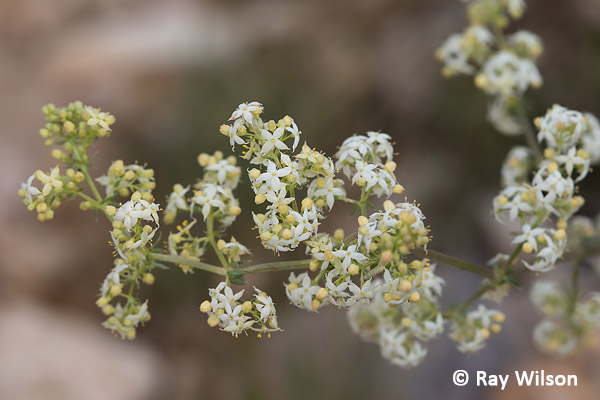
Galium corrudifolium
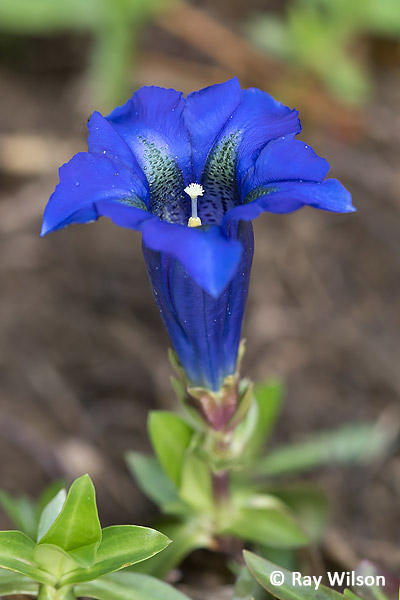
Trumpet Gentian (Gentiana acaulis) |
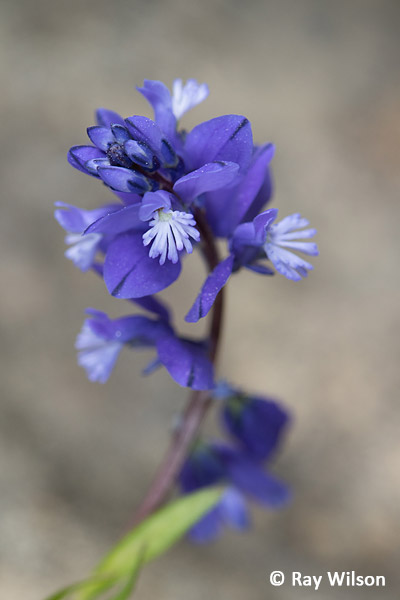
Common Milkwort (Polygala vulgaris) |
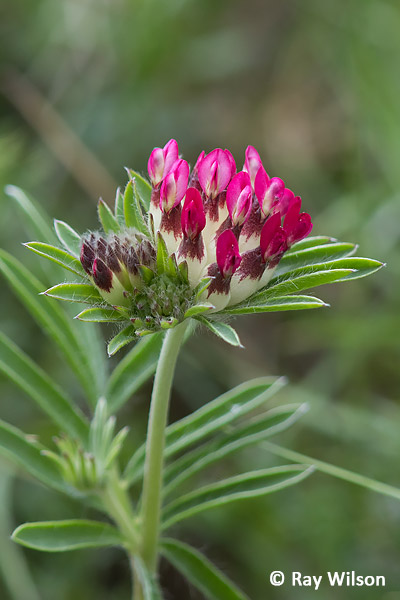
Mountain Kidney-vetch (Anthyllis montana) |
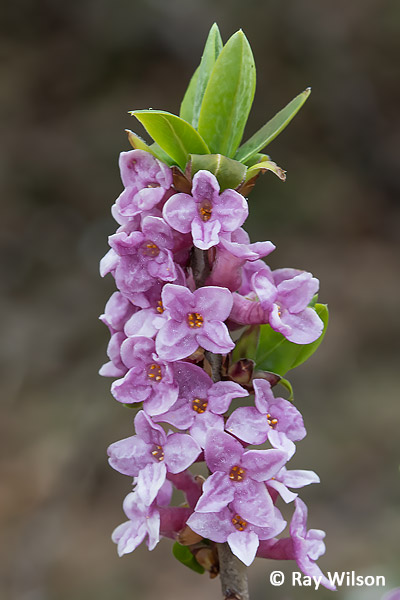
Garland Flower / Rose Daphne (Daphne cneorum) |
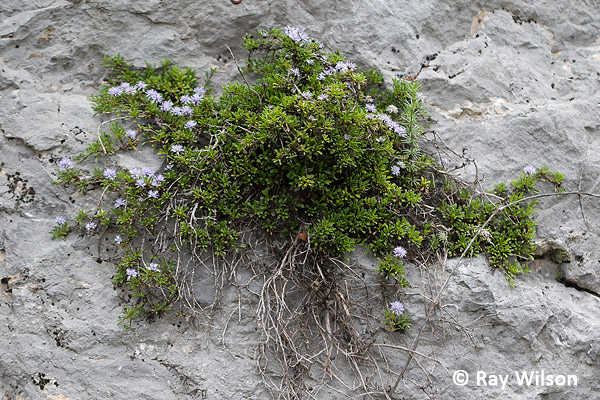
Matted Globularia (Globularia repens)
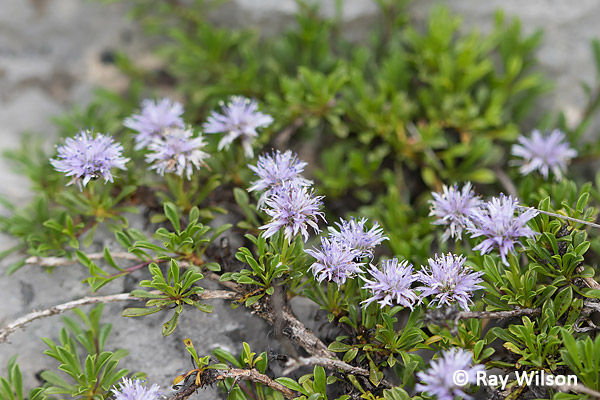
Matted Globularia (Globularia repens)
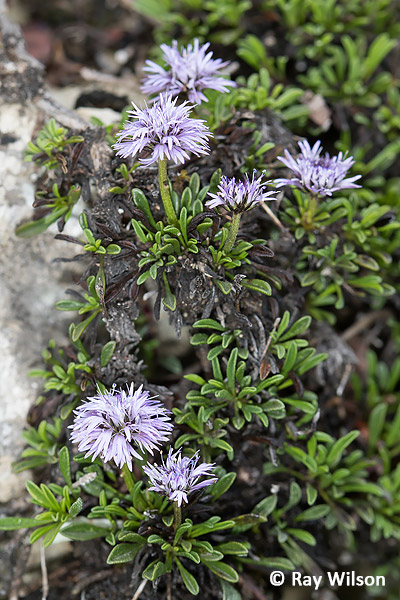
Matted Globularia (Globularia repens) |
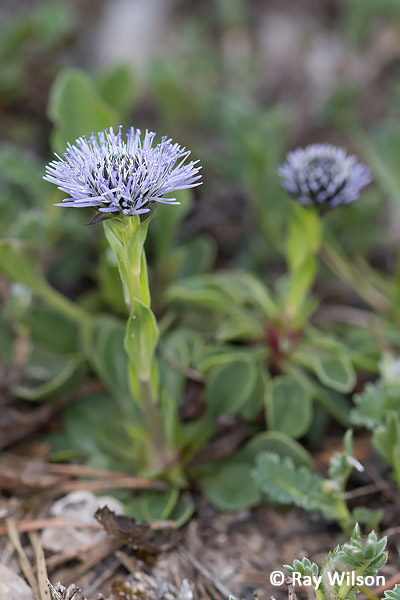
Common Ball Flower (Globularia bisnagarica) |
A few butterflies were on the wing on sheltered, south-facing slopes in the rare sunny periods...
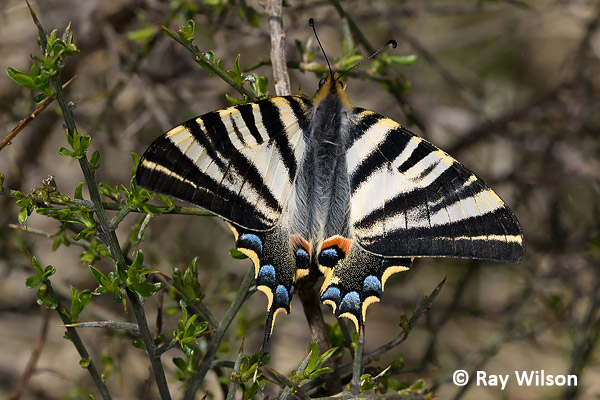
Southern Scarce Swallowtail (Iphiclides podalirius feisthamelii)
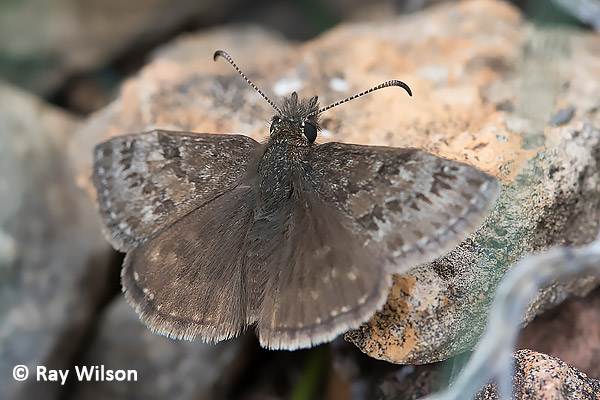
Dingy Skipper (Erynnis tages)
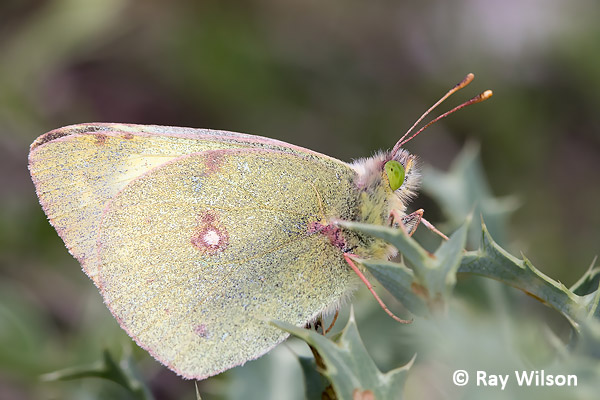
Mountain Clouded Yellow (Colias phicomone)
Ray Wilson owns the copyright of all images on this site.
They may not be used or copied in any form without prior written permission.
raywilsonphotography@googlemail.com